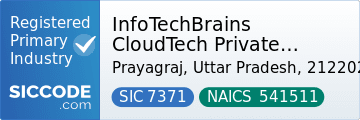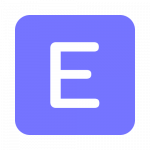Discover essential strategies to thrive in the digital age. From cloud computing and AI to cybersecurity and data analytics, this guide equips small businesses with the tools to succeed in 2025.
As we approach 2025, digital transformation has become a necessity for small businesses, not just large corporations. With rapidly advancing technology, changing consumer expectations, and a globalized market, small businesses must adapt digitally to stay competitive. But how can they achieve this transformation? In this blog, we’ll explore key strategies small businesses can implement to successfully navigate the digital landscape of 2025.
1. Shift to Cloud-Based Solutions
Cloud computing remains a pivotal force behind digital transformation. For small businesses, cloud-based platforms offer numerous advantages:
- Cost-effectiveness: Cloud services operate on a subscription basis, providing access to cutting-edge technologies without hefty upfront costs.
- Scalability: These solutions can easily grow or contract with your business, giving you flexibility as your needs change.
- Remote accessibility: With the growth of remote work, cloud solutions allow employees to work from anywhere, improving productivity and collaboration.
As we approach 2025, more businesses will rely on cloud-based tools like Google Workspace, Microsoft 365, and various cloud storage platforms to enhance operational efficiency and flexibility.
2. Integrate AI and Automation
Artificial Intelligence (AI) is no longer futuristic—it’s a powerful tool for improving productivity, customer engagement, and operational efficiency in small businesses. By adopting AI-driven solutions, companies can automate repetitive tasks, offer better customer service, and make smarter decisions. Here’s how:
- Task automation: AI tools can manage routine activities like customer inquiries, invoicing, and scheduling, freeing up time for employees to focus on higher-value tasks.
- Enhanced customer support: AI-powered chatbots can handle real-time inquiries, answer common questions, and offer support, improving the customer experience and reducing response times.
- Data-driven decisions: AI tools analyze large amounts of data, helping businesses identify trends, optimize processes, and make more informed decisions.
Platforms like Zoho CRM and HubSpot are popular examples of how small businesses can use AI to streamline customer management, sales, and marketing.
3. Prioritize Cybersecurity
As businesses increasingly move their operations online, cybersecurity becomes a critical concern. Small businesses often assume they are less likely to be targeted, but in reality, they are frequently attacked due to weaker defenses. By 2025, prioritizing cybersecurity will be essential for all businesses.
To safeguard against cyber threats:
- Invest in security software: Use trusted antivirus programs, firewalls, and malware protection tools.
- Educate your team: Train employees to recognize phishing attacks, create secure passwords, and follow safe online practices.
- Back up important data: Regularly back up data to ensure quick recovery in case of a breach or system failure.
Small businesses can also consider managed security services to stay protected from evolving cyber threats.
4. Leverage Data Analytics for Growth
Data has become an invaluable asset for businesses of all sizes. For small businesses, understanding and leveraging data analytics can lead to better decision-making, improved customer experiences, and optimized marketing efforts. By utilizing data effectively, businesses can identify trends, anticipate customer needs, and enhance overall operations.
Practical ways to use data include:
- Personalized marketing: Tailor marketing campaigns based on customer behaviors and preferences to boost engagement and conversion rates.
- Product improvements: Analyze customer feedback and sales patterns to refine your product offerings.
- Operational optimization: Use data to streamline processes like inventory management, staffing, and resource allocation.
Accessible platforms like Google Analytics, Tableau, and Power BI can help businesses harness the power of data-driven insights.
5. Build a Strong Online Presence
In 2025, a digital presence will be crucial for small businesses, as consumers increasingly rely on the internet for product research and purchasing decisions. A robust digital footprint can help small businesses attract and retain customers.
Key strategies to strengthen your online presence include:
- SEO optimization: Make your website search engine-friendly to drive organic traffic.
- Social media engagement: Platforms like Instagram, Facebook, and LinkedIn allow businesses to connect with customers, build brand awareness, and foster loyalty.
- E-commerce integration: Offering online shopping through platforms like Shopify, WooCommerce, or BigCommerce can significantly expand your market reach.
A strong online presence helps small businesses maintain visibility and relevance in a crowded digital marketplace.
6. Enhance Customer Experience Using Digital Tools
Today’s customers expect quick, personalized, and seamless experiences. Small businesses can meet these expectations by adopting digital tools that enhance customer interactions. Here’s how:
- Self-service options: Use AI chatbots, customer portals, and knowledge bases to allow customers to resolve issues independently.
- Omnichannel support: Provide customer service across various platforms such as social media, email, live chat, and phone, offering customers more flexibility.
- Personalized experiences: Use data to tailor product recommendations, marketing messages, and customer interactions, enhancing the overall customer journey.
Prioritizing customer experience through digital transformation helps build lasting customer relationships and improve brand loyalty.
7. Invest in Digital Skills and Employee Training
As small businesses adopt new technologies, ensuring employees are well-equipped to use these tools is essential. Investing in digital skills training is critical for fostering a culture of continuous learning and adaptability.
Areas to focus on for employee training:
- Digital marketing: Training employees in social media management, SEO, and content marketing to improve brand visibility.
- Technology platforms: Ensuring staff are proficient in CRM systems, data analytics tools, and cloud-based collaboration software.
- Cybersecurity awareness: Educating employees about online security risks and safe practices to protect business data.
Providing regular digital skills training will ensure that your team can effectively navigate and implement new tools and technologies.
Conclusion
As we look toward 2025, the digital transformation of small businesses will continue to drive growth and competitiveness. By embracing strategies such as cloud computing, AI, data analytics, and cybersecurity, small businesses can remain agile, innovative, and customer-centric. Investing in a strong digital presence and prioritizing customer experience will position businesses for long-term success in an increasingly digital world.
To know more about digital marketing trends click here also refer here to learn more about how to successfully launch your startup.











